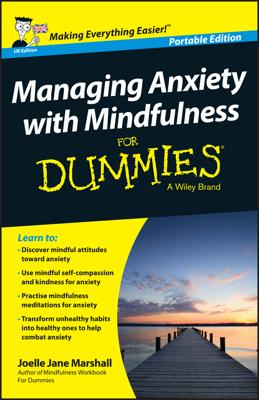Combat boredom for mindfulness
Meditation can sound like the ultimate boring activity. Sit there and do nothing. What could be more boring? Even watching paint dry may sound a more exciting prospect. Society seems geared up to help you avoid boredom.Television adverts are short and snappy to grab your attention, and mobile phones help to distract you at any moment that a hint of boredom arises. These continual forms of distraction make you bored more quickly and more easily. Meditation is a courageous step against the tide.
If you feel bored during meditation, you’re not really being mindful. Boredom generally implies a lack of connection, or that you’re thinking about the past or future instead of the present. If you’re finding attending to your breathing boring, imagine if your head was plunged into water – you’d suddenly become very interested in breathing!
Noticing feelings of boredom and moving your focus back to your breathing is all part of the process of mindfulness and quite natural.
The following techniques can help you work with the feelings of boredom during meditation:
-
Acknowledge the feeling of boredom. Boredom is the feeling that has arisen, so accept it in this moment.
-
Notice the thoughts running through your mind. Perhaps, ‘Ohhhh, I can’t be bothered!’ or ‘What is the point of doing this?’
-
Get interested in boredom. Allow yourself to become curious. Where did the boredom come from? Where’s it going? Can you feel boredom in certain parts of your body? Notice the desire to sleep or do something else other than continuing to practice.
-
Connect your attention to the sensations of breathing and see what happens to boredom.
-
Take a step back from the emotion of boredom. If you’re aware of the boredom, you’re not the boredom itself. Observe the boredom from this stance of a decentered, detached awareness, as if the boredom is separate from you.
Combat restlessness for mindfulness
Restlessness is similar to boredom, but is associated with excessive levels of energy and a common mental state. You run around all day doing a million and one things and then when you sit down to meditate, your mind is still racing.Try these two ways of coping with restlessness:
-
Begin your meditation practice with some mindful movements. You may choose to go mindful walking or perhaps do some mindful yoga. This helps to slowly calm your mind so that you’re able to practice some sitting or lying down meditations.
-
Observe your restlessness without reacting to it. Feel the restlessness in your body. What is your mind telling you to do? Continue to sit despite what the mind says. This is a powerful meditation, a discipline that trains the mind to do what you tell it to do rather than the other way round.
You’re in control. Just because your mind is restless you don’t have to run around like a headless chicken doing what it tells you. The mind can say things like, ‘Oh, I can’t stand this. I need to get up and do something.’ You can watch this show going on in the mind, breathe into it, and guide your attention back to the inhalation and exhalation.

